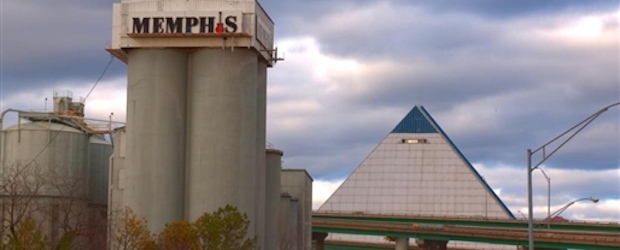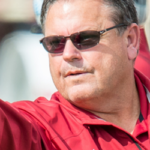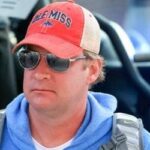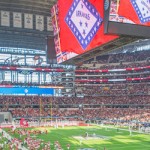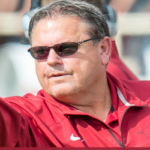 Sidney Shlenker descended on the city of Memphis like a character out of “The Music Man.”
Sidney Shlenker descended on the city of Memphis like a character out of “The Music Man.”
He talked a big game, but he had the credentials to back up the talk.
He once owned the Denver Nuggets.
He once was the chief executive of the company that ran the Astrodome in Houston.
He was born in Monroe, La., in August 1936. Two years later, his family moved to Houston. Shlenker’s father became wealthy in the liquor business and real estate, eventually purchasing Houston National Bank.
Shlenker headed to Tulane University at New Orleans but had little interest in his studies. He returned to Houston without a degree and worked his way up the ladder at his father’s bank, moving from teller to the vice president in charge of installment loans.
He teamed up with an insurance salesman named Allen Becker in 1966 to convince a client to sponsor a boat show at a new facility known as the Astrodome. Becker and Shlenker earned about $9,000 each and decided to form a company known as Pace Management Corp. It produced events at the Astrodome that ranged from demolition derbies to motorcycle races.
By 1990, the renamed Pace Entertainment was producing multiple Broadway touring shows, hundreds of rock concerts, dozens of motorcycle races and even tractor pulls. The company invested in Broadway shows and owned several theaters.
Shlenker owned 45 percent of Pace until the early 1990s, but he let Becker run the day-to-day operations beginning in 1968. That allowed Shlenker to concentrate on sales and marketing of the Astrodome.
“He brought in heavyweight fights and other events to the world’s first domed stadium,” the Los Angeles Times reported after Shlenker died at age 66 in April 2003. “But his promotional piece de resistance may have been securing the rights to the 1973 tennis match between Billie Jean King and Bobby Riggs. The so-called Battle of the Sexes drew 33,000 paying customers to the Astrodome, one of the largest crowds ever to watch a tennis match.
“After the Astrodome’s builder, Judge Roy Hofheinz, suffered a stroke in 1975, Shlenker was made chief executive and president of Astrodomain Corp., the Astrodome’s parent organization. In so doing, he became president of the Houston Astros baseball club. In 1982, Shlenker became minority owner of the Houston Rockets basketball team. Three years later, he sold his share of the Rockets and purchased the Denver Nuggets for $20 million from fellow Texan Red McCombs, a friend and sometimes business partner. The deal was consummated during a 30-minute phone call. Four years later, Shlenker sold the Colorado basketball team for $65 million.”
Flush with money, he turned his eyes to Memphis and the idea of The Great American Pyramid, a 20,000-seat facility on the banks of the Mississippi River.
It was to include a Grammy music museum, the College Football Hall of Fame, a Hard Rock Café and an amusement park known as Rakapolis. Mud Island would be renamed Festival Island.
Shlenker told The New York Times: “It’s going to be a monument like the Statue of Liberty or the Eiffel Tower, a signature for the city. The difference is, this will have something inside it.”
Memphis magazine named Shlenker its Memphian of the Year for 1989 and put him on the cover.
The project, however, had problems from the start.
In the 1950s, Memphis artist Mark Hartz had come up with a plan for three pyramids to be built overlooking the Mississippi River. Years later, Hartz’ son resurrected the idea and convinced entrepreneur John Tigrett to take it on. It was Tigrett who brought Shlenker to town. Tigrett and Shlenker later would have a falling out and were no longer speaking by the time Shlenker left Memphis.
The groundbreaking ceremony was in September 1989, and The Pyramid opened in November 1991 without the amenities that had been promised by Shlenker. There was no music museum, no College Football Hall of Fame, no Hard Rock Café, no amusement park.
It was owned and operated by the city of Memphis and Shelby County. The county sold its share to the city in April 2009.
“Shlenker left town, leaving Memphians holding a bag full of past-due construction bills,” The Memphis Flyer later wrote. “In 1991, our former Memphian of the Year earned a Memphis magazine Kudzu Award (our version of Esquire’s Dubious Achievements) and was featured on the cover as a comical Humpty-Dumpty figure atop The Pyramid that had been his downfall.”
Things only got worse for Shlenker.
He moved to Los Angeles and found himself entangled in 1995 in the Heidi Fleiss affair. Shlenker, Mexican businessman Manuel Santos and actor Charlie Sheen testified in the Hollywood madam’s trial that they had written the checks produced in court by Fleiss’ prostitutes.
Three years later, Shlenker was involved in a highway accident that left him a paraplegic.
Back in Memphis, The Pyramid came to be known by locals as the Tomb of Doom.
On opening night, the arena floor flooded. The acoustics and sight lines left much to be desired. The surrounding Pinch neighborhood never fully developed into the tourist attraction that had been promised to Memphis taxpayers.
There were a few bright spots. Some good Memphis Tiger basketball teams played there. Lennox Lewis and Mike Tyson boxed there in 2002. A huge concert marking the 25th anniversary of Elvis Presley’s death occurred there in 2002. The NCAA men’s basketball tournament held first- second-round games there in 1995, 1997 and 2001.
When Memphis landed an NBA team, the new tenant declared that its stay at The Pyramid would only be temporary. The truly world-class FedEx Forum was built adjacent to Beale Street at a cost of more than $250 million and opened in 2004.
The Pyramid went dark.
So what would go there?
Some said it should be a casino.
Others proposed the nation’s largest aquarium.
An outlet mall?
An indoor theme park?
Enter Johnny Morris…
To continue reading, click here to visit Rex Nelson’s Southern Fried Blog.


